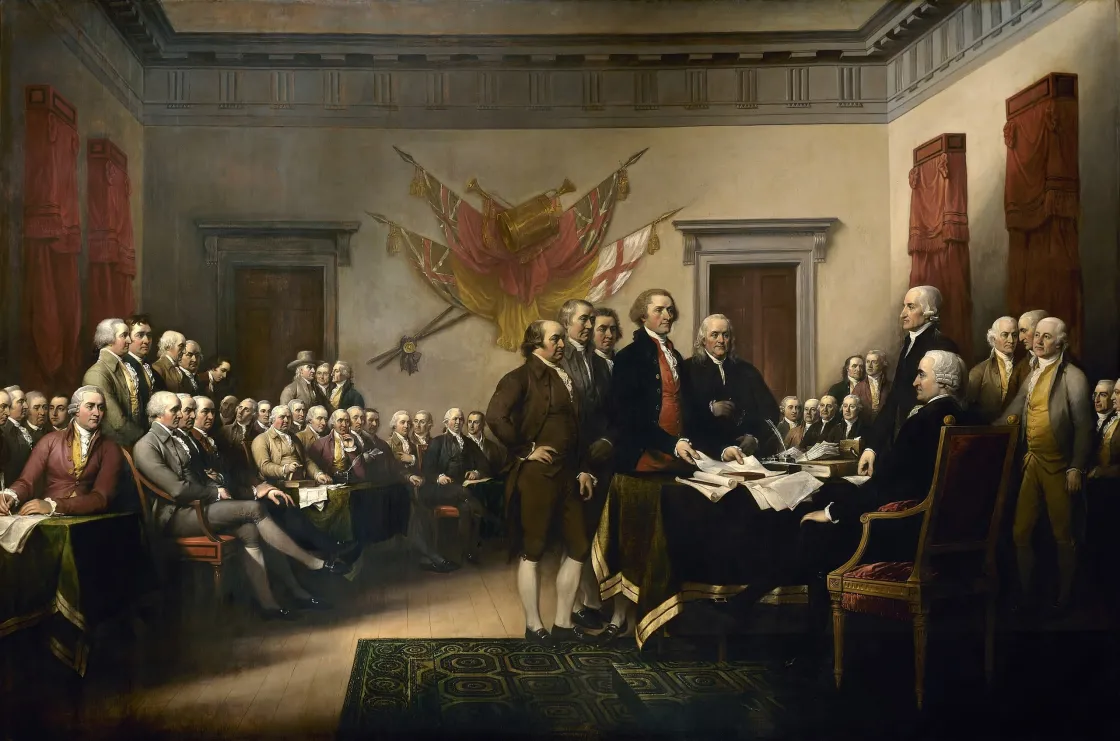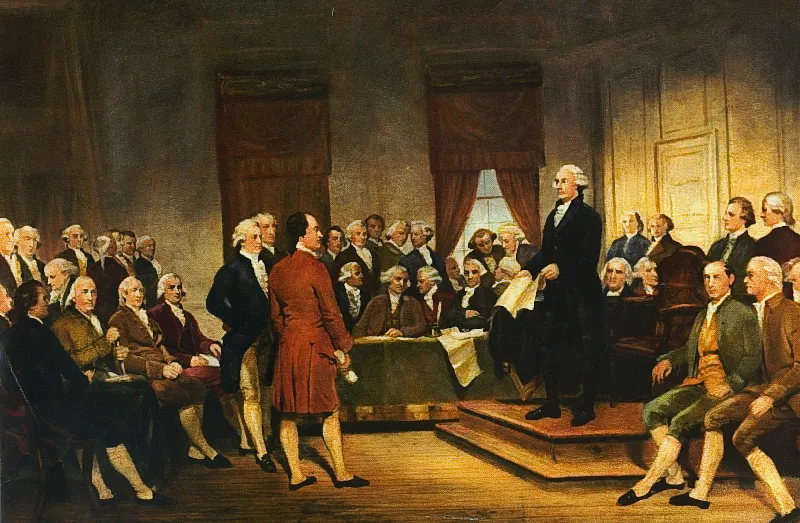Roger Sherman

Roger Sherman was born into a family of farmers in Newton, Massachusetts, on April 19, 1721. Sherman was self-educated, but his hunger for knowledge, access to his father’s large collection of books, and a Harvard-educated local minister who became his mentor all allowed him to gain a good education. He initially became a shoemaker in his new hometown of Stoughton, Massachusetts. When his father died in 1743, Sherman, his mother and his siblings moved to Milford, Connecticut, where he and his brother opened the town’s first store: a shoe shop.
Due to his good, if unofficial education, Sherman soon landed another job as the county surveyor in 1745. His income significantly increased, as did his reputation. Continuing his education, he taught himself law and passed the bar in 1754. Quickly becoming a leading citizen, he was elected to represent New Milford at the Connecticut House of Representatives, serving from 1755 to 1758 and again from 1760-61. He continued to rise through the ranks of Connecticut politics and society in the years leading up to and during the Revolutionary War.
After the Boston Tea Party in December 1773 and the Intolerable Acts sparked increased resentment of British Parliamentary rule and taxes, the colonies united to plan and appeal. They sent representatives from Philadelphia in June, 1774 for a “Continental Congress” to discuss next steps. Connecticut sent Roger Sherman as part of its delegation. While in Philadelphia, Sherman signed the Continental Association, a boycott on British Trade.
At the Second Continental Congress in 1776, he was a member of the Committee of Five that drafted the Declaration of Independence. He also served on the Committee of 13, tasked with creating a constitution for the new nation, which became the Articles of Confederation. Sherman was an early advocate for a bicameral legislature, that is, one with two “houses”, like how Congress functions today. His proposal was rejected. The articles instead created a unicameral, or “one house” legislature. Sherman remained a member of the Continental Congress for the duration of the Revolutionary War and was one of the men who signed the Treaty of Paris which ended the conflict and secured America’s independence.

Remaining a representative after the war, he tried to help the dysfunctional Confederation Congress steer the country through the first difficult postwar years. The Articles of Confederation which he had helped to create proved unable to meet the crises that the nation faced. A new convention was planned separate from the congress, to meet and discuss revisions to the articles. Connecticut once again called on Sherman to lead Connecticut’s delegation. Much to Sherman’s surprise, when the convention began many of the men present—including James Madison— called for an entirely new Constitution, not a revision to the current articles. Sherman fought back, defending the articles and instead advocating for revision, saying "the problem with the old government was not that it had acted foolishly or threatened anybody's liberties, but that it had simply been unable to enforce its decrees."
Sherman and the Connecticut delegation rejected the idea that any part of the government be directly elected by the citizens. He thought that this would pit the more populous states—like New York and Virginia—against less populous ones like his home state. He was dismayed at the vast new arrays of powers which the reformers sought to give to the new government and opposed creating and strengthening a national executive like the president. However, as the debates dragged on Sherman realized that the majority of the states—representing a vast majority of the population—were in favor of the proposed Constitution. Sherman then decided to work within the framework of the new system to advocate for the rights and needs of smaller states. He helped to shape the final document so that it would be acceptable to all.
This final version of the Constitution—known as the Connecticut Compromise—is the version which the United States still operates under to this day, though amended. It included a bicameral legislature of two houses. The lower house would be elected by the citizens, each state represented according to its population. The upper house, appointed by the state legislatures, would give an equal number of seats to each state. This balanced the weight of the population of the larger states and the needs of the smaller states.

Sherman, an opponent of slavery, also sought to ensure that only the free inhabitants of each state were counted towards its representation. This would prevent the southern states from artificially increasing their number of delegates by counting slaves among the population. This debate—the southern states seeking more power with their slaves and the northern states with their much smaller slave populations, fighting against it—ultimately led to the Three-Fifths Compromise; each slave was counted as 60% of a person for purposes of state representation.
Sherman served his last term as a representative in the first sitting of the new constitutional Congress in 1789. He then served as a Senator for Connecticut until his death in 1793. He is the only founding father to have signed all four principal founding documents: The Continental Association, The Declaration of Independence, The Articles of Confederation and the Constitution of the United States.





